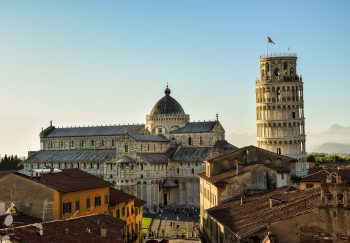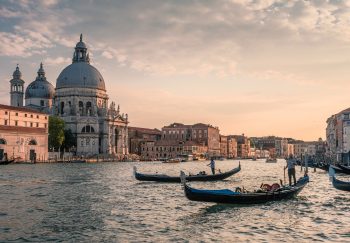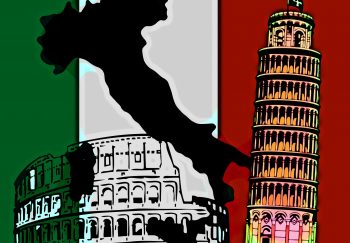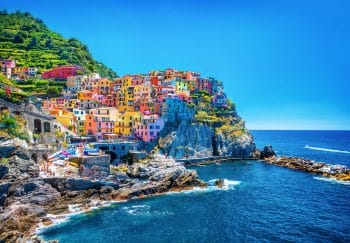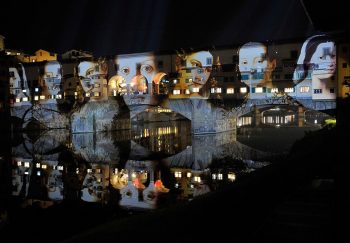We chose “elements” in 2012, just a few months after the first Italy Roundtable was established. I used “fire” to illustrate my piece. This month’s theme is ELEMENTS. I am using “earth” to inspire – or more specifically, what’s deep within the earth.
Italy is a cake. There are many layers to Italy. Centuries of different types of debris accumulate on forgotten or conquered cultures. This clears the way for new cultures. In many cases, however, the old culture remains and is waiting to be rediscovered.
This is evident in famous excavation sites such as Pompeii. However, some sites remain underground beneath city streets and structures. One such underground attraction caught my attention in Naples. Although there are only a few places that you can go below street level today to get a glimpse into the past, it is worth exploring.
Underground attractions are not something you just stumble upon. You have to think “Oh, that’s interesting” and then wander in.
At ground level, there is nothing to see. They must be seen to be believed.
Although I was familiar with “Napoli Sotterranea”, the popular underground tours, I didn’t know there were other underground sights within Naples. When Marina, my tour guide, took me to the San Lorenzo Maggiore church during my first trip, I didn’t know what was ahead.
When she purchased our tickets, she spoke briefly with the woman behind the counter, but her Italian was not very good. If she told me where we were going, it wasn’t clear to me. Marina quickly walked through the church to a staircase and then went down. I followed her, and was a little stunned when I reached an ancient Roman market.
San Lorenzo Maggiore was constructed in the 13th century. The staircase in the Cloister is a time-travel portal. The remains of Neapolis were used to build the church. This was a city that the Greeks founded in the 5th Century BCE. The Roman Empire eventually took control of Neapolis, and so the remains of Neapolis are a mixture of ancient Roman and Greek bits and pieces.
It happens that the place of the agora of Greek Neapolis, which would become the forum of Roman Neapolis, is also where the Gothic church San Lorenzo Maggiore would eventually be built in the late 1200s. What you see as you descend those stairs is the remnants of an important part of an ancient city. Although the existence of this historic site has been known for many years, it was only made available to the public in 1992 after two decades of hard work to discover the ancient ruins.
Marina and I were the only people there at that time. We would have gone down alone if it wasn’t for the two men who were doing more archaeological work in the corner.
After touring the huge city of Pompeii, with its many piles of rubble and other attractions, this small street of Neapolis felt very intimate.
You can walk along the cobblestones past intact walls and storefronts and take a look inside once bustling market shops. (…Is that a bakery, or is it a market? It’s a bread oven, I swear. Oh, and this is a laundry! It’s almost as if you could forget that you are underground. The street and buildings look almost like the shops and streets above.
The underground nature of the site meant that I felt like I was in a grave.
In some ways, that’s exactly what we do when we climb down the strange little staircases to see what remains of those who lived there hundreds of thousands of years ago. The analogy may not be literal in a place such as Pompeii but I feel reverent whenever I enter those areas, regardless of whether it is a graveyard. It’s the same surreal feeling that I get as a time traveler .
Walking in the footsteps of those who have gone before me is one of my favorite experiences as a traveler. It’s even more meaningful when I can do it literally.
Visiting San Lorenzo Maggiore
The ticket includes entry to the excavations as well as a visit at the church museum. Here you can view both historical church artifacts, and items from the Neapolis excavations. The church is open to all.
You can wander as you please. It is the only self-guided underground tour available in Naples. Like all ruins, San Lorenzo Maggiore’s excavating makes more sense if there is a guide to explain what you are seeing. However, I encourage you to visit the site regardless of whether you have a guide.
Marina is an enthusiastic and knowledgeable guide in Naples. I cannot recommend her enough. Find out more about her private Naples tours and say hello to Marina.
- Piazza San Gaetano 316
- Excavations open daily: 9:30am-5:30pm
- Tickets for excavations: EUR9 for regular tickets, EUR7 for ArteCard holders, and EUR6 for under-18s.
-
official website
These affiliate links will take you to the website of my partner, but you won’t be charged any extra. Thanks.
-
Ancient Naples: Above-and-Under San Lorenzo Maggiore Tour from Context Travel -
Naples Above & Underground Archaeology Walking Tour/San Lorenzo Maggiore Tour from Viator
Italy Roundtable: Other Voices
See what my fellow bloggers are discussing this month! Follow me to each post. Please leave comments and share with your friends. Tune in next month to see another topic on Italy Blogging Roundtable!
- ArtTrav
- At Home in Tuscany –
- Bleeding Espresso –
- Brigolante –
- Ciao Amalfi –
- Driving like a Maniac
- Girl from Florence Paolo Fanciulli
- Italofile
Are we connected?
Have you LIKED us on Facebook? Are you following our Twitter? We’re very friendly, so please drop by to say hello. We are always open to suggestions for future topics for the Italy Blogger Roundtable. Drop us a message on Facebook, Twitter, or comment on any of our posts.
